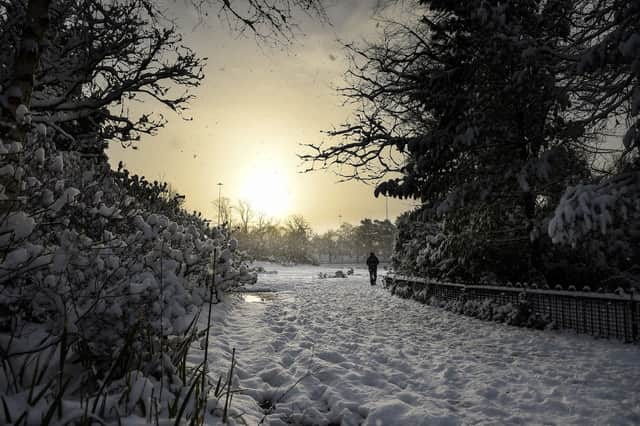When do the days start getting lighter for longer? Here's when the clocks go forward and spring begins
The cold and dark winter weather has fully settled across the country, and many are counting down for the longer days to arrive.
The shortest day of 2023 has passed which means that the sunrise is slowly getting earlier and the clocks will be moving forward come March.
Advertisement
Hide AdAdvertisement
Hide AdHere's what you need to know about the shortest day of the year, when the days will become longer and when the clocks will go forward.
When is the shortest day of the year?
Known as the Winter Solstice, the shortest day of the year is on the Saturday, December 21, 2024.
The Winter Solstice marks the beginning of winter in the Northern hemisphere and could signal the arrival of even colder weather.


When do the days start getting longer?
The days started getting longer after December 22, 2023.
The extra hour of daylight following the solstice gradually becomes noticeable toward the middle of January.
We continue to gain an additional hour of daylight every four weeks until the longest day of the year on June 20, 2024.
When does Spring start?
The beginning of Spring - the Spring equinox - will take place on Wednesday, March 20 2024.
When will the clocks go forward?
The clocks will go forward on March 31 2024, resulting in considerably lighter days.
There will then be an additional hour of sunlight during waking hours.


How does the lack of daylight affect people?
Advertisement
Hide AdAdvertisement
Hide AdA lack of sunlight in the winter months has been linked to a condition known as Seasonal Affective Disorder (SAD).
According to the NHS, a lack of sunlight might stop a part of the brain called the hypothalamus working properly which may affect the production of melatonin, serotonin and the body’s internal clock.
This can lead to symptoms including anxiety, apathy, general discontent, loneliness, and sadness.
Some people who suffer from SAD can benefit from sitting by a therapy lamp, which replicates the natural light from the sun.
It is best to use it in the hours between waking and sunlight while you get ready, eat breakfast or work from home.
If you struggle to get up on dark mornings, a wake up light may make it easier. These give off an artificial light which mimics sunrise and allows your body to wake up more naturally, - as opposed to a noisy alarm.